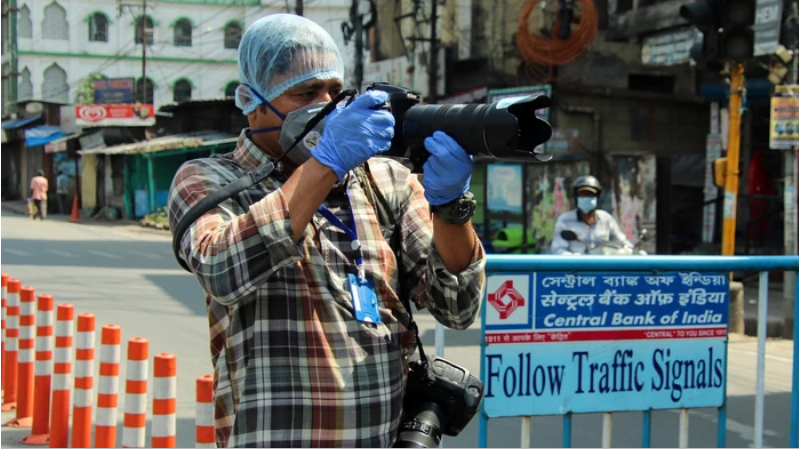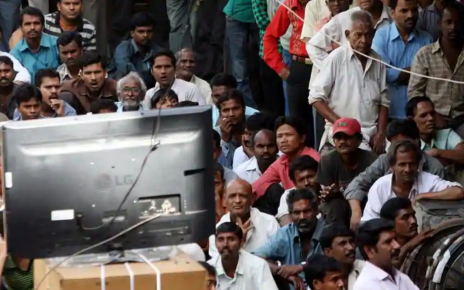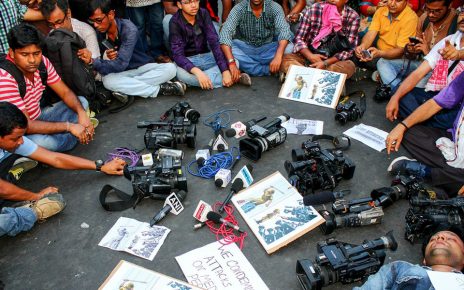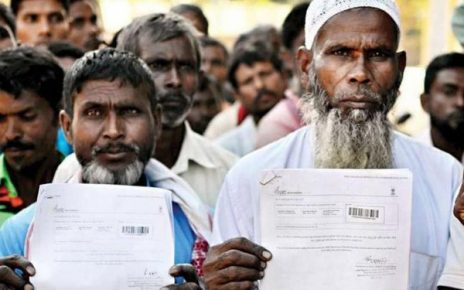Counterview
20 June 2020
The Rights & Risks Analysis Group (RRAG), a New Delhi-based think-tank claiming to conduct risks analysis to prevent human rights violations, in a detailed report on arrest, registration of FIRs, summons or show causes notices, physical assaults, alleged destruction of properties and threats for reportage against 55 journalists amidst Covid-19, has regretted that India has become the riskiest place for the journalists in the world.
Giving details of how the state has been treating each of them, the report, “Rights and Risks Analysis Group, India: Media’s Crackdown During COVID-19 Lockdown” points to how these journalists acted as messengers by risking their lives to convey the news of various mismanagement, deficiencies, corruption, hunger of the migrant workers/impoverished citizens, lack of adequate personal protective equipment (PPE) for doctors at hospitals etc.”
Blaming the Government of India (GoI) for seeking to suppress press freedom under the garb of deliberate or inaccurate reporting on Covid-19, the report recommends that the Press Council of India (PCI) to intervene in all the cases of attacks on the media. It asks GoI to create necessary conditions for press freedom, while political parties whether the ruling BJP or the Opposition parties ought to rein in on the party cadres attacking the press freedom.
Excerpts:
At 8 pm on March 24, 2020, Prime Minister Narendra Modi announced a nationwide lockdown for 21 days effective from 00 hrs of March 25 to combat spread of the COVID-19 pandemic in India. Since then, the lockdown was extended for the fourth time till May 31, and thereafter lockdown restrictions are gradually been eased.
However, neither the Central government of India nor the State governments were ready to deal with the real life problems of the populations, which included 453.6 million migrant workers, not to mention about 71.35 million people living in “extreme poverty”. Absence of food, shelter and opportunity to work as well as means of transport because of the lockdown created enormous suffering.
Bringing news became a challenge in itself as the State governments across the spectrum cracked down on the media. When writ petitions filed in public interest for redressal of grievances of migrant labourers in different parts of the country was considered by the Supreme Court of India on March 31, 2020, the Government of India prayed to suppress the freedom of opinion and expression relating to Covid-19 under the garb of “deliberate or inaccurate” reporting by the media, particularly web portals, having a “serious and inevitable potential of causing panic in larger section of the society”.
It was obvious that the Government of India wanted media to toe its line. The Supreme Court while rejecting the prayer of the Government of India on March 31, 2020 stated, “We expect the media [print, electronic or social] to maintain a strong sense of responsibility and ensure that unverified news capable of causing panic is not disseminated…We do not intend to interfere with the free discussion about the pandemic, but direct the media refer to and publish the official version about the developments”.
The judgment of the Supreme Court did not stop various State governments to clamp down on the journalists who acted as messengers by risking their lives to convey the news of various mismanagement, deficiencies, corruption, hunger of the migrant workers, lack of adequate personal protective equipment (PPE) for doctors at hospitals, etc.
As of May 4 2020, nearly 100 journalists in India were reported to have been infected with the virus while on duty. Uttar Pradesh, Jammu and Kashmir and Himachal Pradesh went on a spree to register First Information Reports against the journalists. In West Bengal, journalists were warned to behave “properly” and threatened with action under the Disaster Management Act for allegedly publishing one-sided stories during the coronavirus outbreak.
The Mumbai Police went to the extreme by issuing a gag order under section 144 of Criminal Procedure Code (CrPC) on 23 May 2020 “prohibit(ed) any person inciting mistrust towards government functionaries and their actions taken in order to prevent spread of the Covid-19 virus and thereby causing danger to human health or safety or a disturbance to the public tranquility”. On May 13, 2020, the Editors Guild of India expressed concern over “a growing pattern of misuse of criminal laws to intimidate journalists in different parts of the country”.
Highest number of attacks on media persons was reported from Uttar Pradesh (11 journalists), followed by J&K (6 journalists)
Journalists belonging to prominent newspapers like “The Hindu”, “The Indian Express” and webportal like “The Wire” were targeted in the crackdown to suppress the truth. A total of at least 55 journalists faced arrest, registration of FIRs, summons or show causes notices, physical assaults, alleged destruction of properties and threats for reportage on COVID-19 or exercising freedom of opinion and expression during the national lockdown from 25 March to 31 May 2020.
The highest number of attacks in the media persons was reported from Uttar Pradesh (11 journalists), followed by Jammu & Kashmir (6 journalists), Himachal Pradesh (5), four each in Tamil Nadu, West Bengal, Odisha, Maharashtra, two each in Punjab, Delhi, Madhya Pradesh & Kerala and one each in Andaman & Nicobar Islands, Arunachal Pradesh, Assam, Bihar, Chhattisgarh, Gujarat, Karnataka, Nagaland and Telangana.
The Government of India remains responsible to create necessary conditions for press freedom. However, when the Government of India seeks to silence the media under the garb of curbing fake news, it cannot claim to be promoting the freedom of opinion and expression but legalise the very attempt to force the media to toe its line.
This has rippling effects as reflected from the number of FIRs registered by the police across the country during the lockdown. The ruling political parties at the Centre as well as at the state level have also been taking measures to force the media to toe their lines. The police have been too compliant to register FIRs filed by the ruling parties.
Lately, the activists of the opposition party at the Centre have also been filing similar complaints against the journalists with the police. The crackdown during the Covid-19 lockdown shows the fragile atmosphere under which the media is operating in India.
The Press Council of India (PCI), the statutory body empowered to protect the rights of journalists, intervened suo motu in four cases during the period i.e. FIRs against Republic TV, FIR against Editors of Media Break Newspaper, online threat to the Editor of “Arunachal Times” and the threat of criminal prosecution and questioning of a special correspondent of the “Indian Express” by the Delhi Police.
However, these interventions of the PCI are highly inadequate and media remains at serious risks in India.



